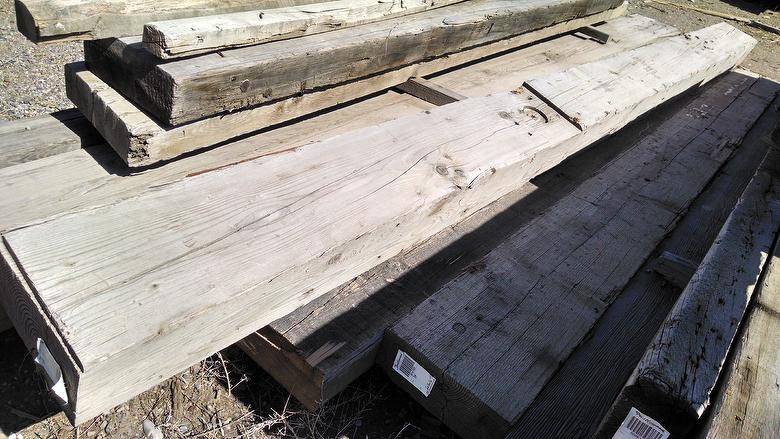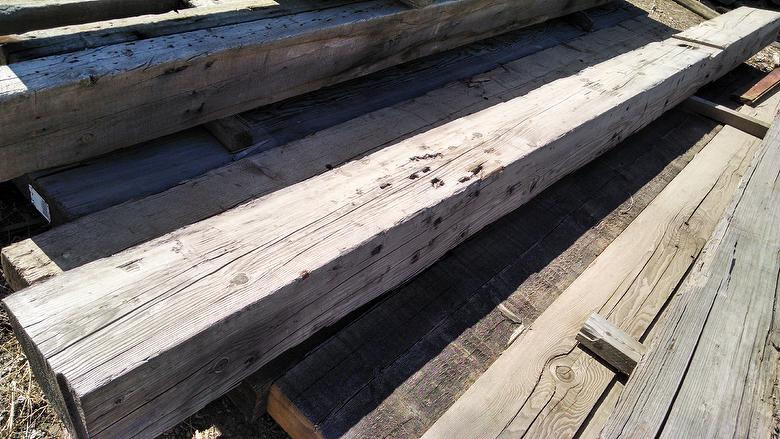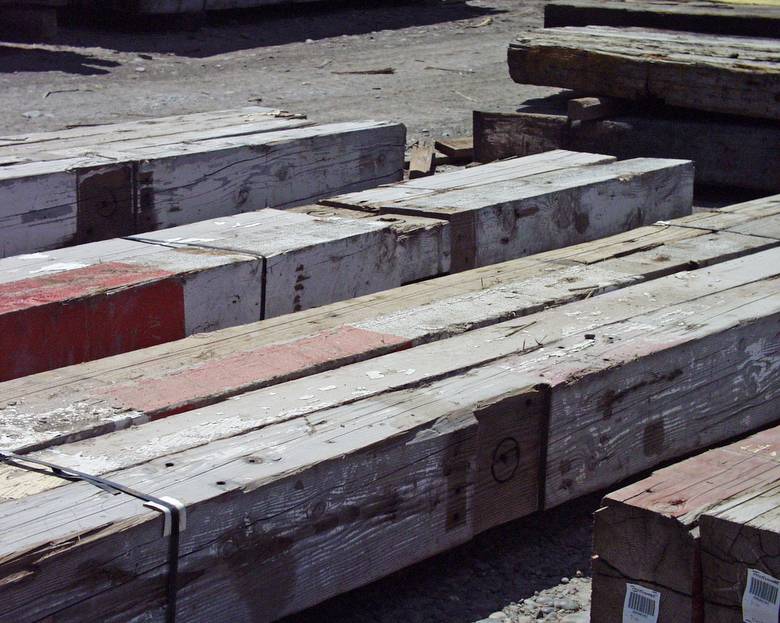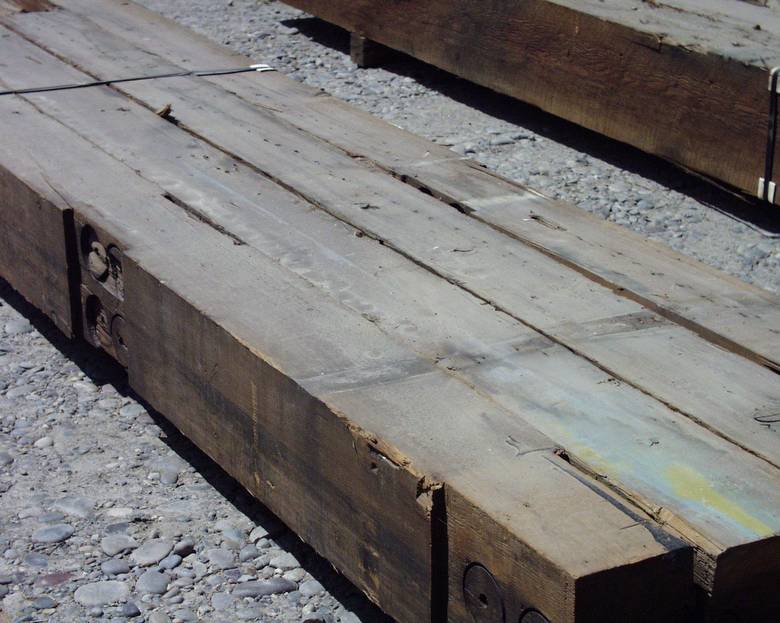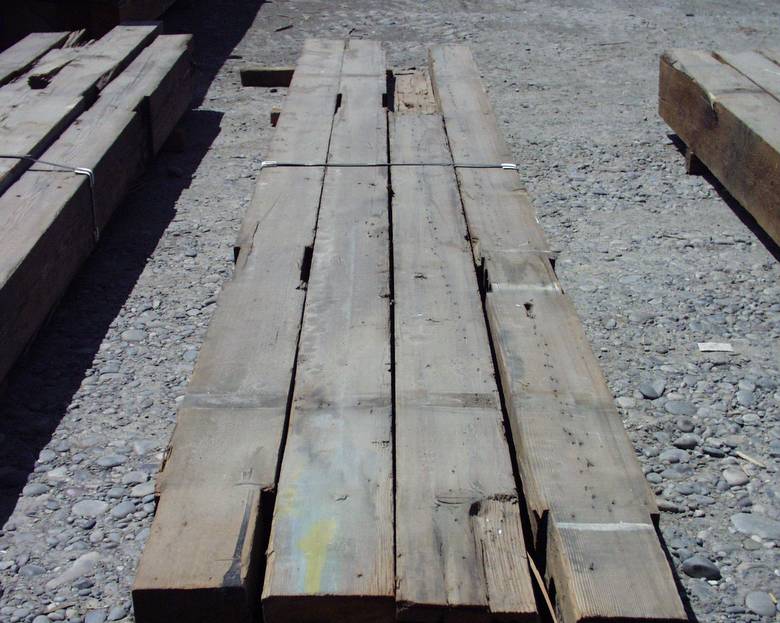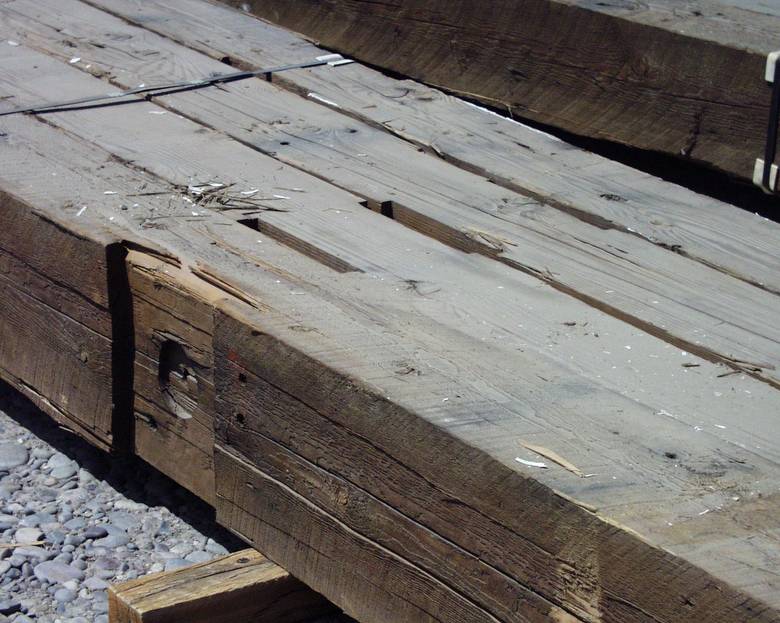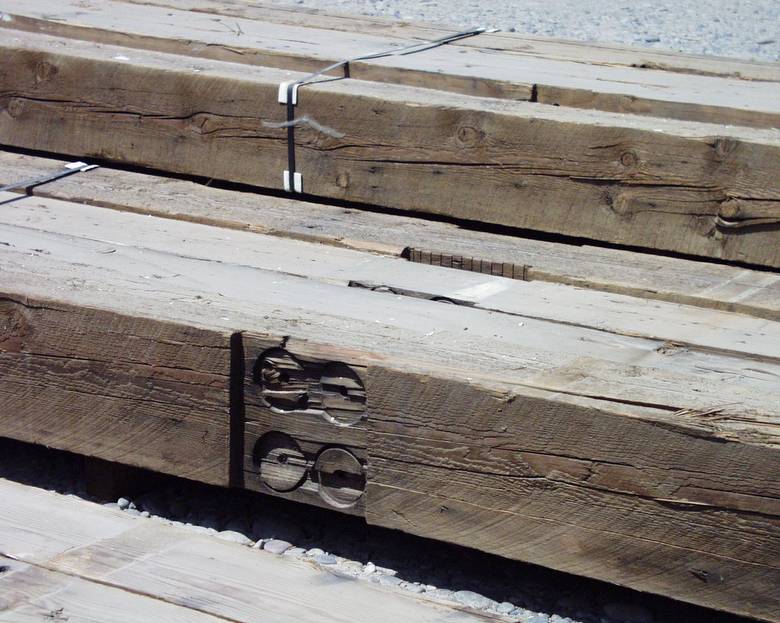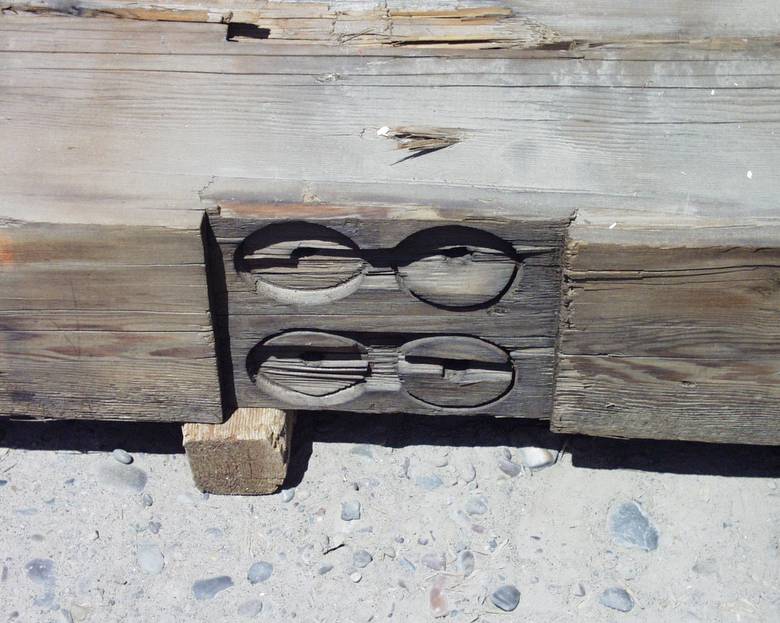10x14 Defense Depot DF Weathered Timbers
10x14 Defense Depot DF Weathered Timbers
Salvaged from US Army Ogden UT Defense Depot; also some 9x12s and 10x12s
Specification Sheet #7140 - WeatheredBlend Timbers
Request Quote
Height
Width
Length
Quantity
10"
14"
to 22'
min: 1 each
Related Productline Pages
WeatheredBlend
Antique Barnwood Brown Smooth - Mira Loma
Specification Sheet #7140 - WeatheredBlend Timbers
Products Involved
Trestlewood's WeatheredBlend Timbers involve a mix/blend of various sources of reclaimed/antique timbers and timbers naturally aged/processed to give them a weathered appearance. Trestlewood products that can be included in a WeatheredBlend package include, but are not necessarily limited to, NatureAged Timbers (Spec Sheet #7130), Weathered Timbers (Spec Sheet #7103), Trestlewood II (Salty Fir) Weathered Timbers (Spec Sheet #1103), Willamette Character DF Timbers (Spec Sheet #2118), DF Marquette Timbers (Spec Sheet #2110), Weathered Picklewood Timbers (Spec Sheet #7150), Trailblazer Weathered Timbers (Spec Sheet #7101), HarborAged Timbers (Spec Sheet #2140), and Douglas Fir Rustic Timbers (Spec Sheet #2130.) Blended products are results oriented - they increase Trestlewood's ability to help economically achieve a look desired by a client by freeing up the strengths and inventory of multiple complementary product lines.
Species
Mixed Species, heavy to (and often exclusively) softwoods. May include Pines, Douglas Fir and other Firs, Spruce, Larch, Cedar and others. Trestlewood can include hardwood timbers (RubyOak/RubyHardwood and other) at its discretion (see WeatheredBlend Hardwood Timber Spec Sheet #6160 and RubyOak/RubyHardwood Spec Sheet #s 6140 and 6147.)
Source
Reclaimed/Antique Timbers: Barns, corncribs, stables, trestles, mills, homes and other buildings/agricultural structures and construction projects from different locations in North America.
NatureAged and HarborAged Timbers: Raw timber stock that is processed into NatureAged or HarborAged Timbers can come from a variety of sources, including: i) new timber stock; ii) timbers cut from beetle-killed, fire-killed or dead-standing trees; iii) timbers cut from material which has weathered out of spec, and iv) timbers resawn from wood (timbers, logs) reclaimed from various salvage projects (these timbers would also qualify as antique/reclaimed timbers.)
New (Green) Timbers: Raw timber stock that comes from the same sources as NatureAged/HarborAged Timbers, but is not processed into NatureAged or HarborAged Timbers.
NatureAged and HarborAged Timbers: Raw timber stock that is processed into NatureAged or HarborAged Timbers can come from a variety of sources, including: i) new timber stock; ii) timbers cut from beetle-killed, fire-killed or dead-standing trees; iii) timbers cut from material which has weathered out of spec, and iv) timbers resawn from wood (timbers, logs) reclaimed from various salvage projects (these timbers would also qualify as antique/reclaimed timbers.)
New (Green) Timbers: Raw timber stock that comes from the same sources as NatureAged/HarborAged Timbers, but is not processed into NatureAged or HarborAged Timbers.
HC/FOHC
Generally Heart Center (HC)
Metal
Allowed. Nails, bolts and other fasteners can be removed, cut flush or left as-is. Some metal can be broken off inside the beam.
Mortise Pockets/Notches/Holes
Mortise pockets and notches from the original joinery are allowed (this would be especially applicable to Trailblazer Weathered Timbers.) Nail, bolt, peg and other fastener holes are allowed. The quantity and size of mortise pockets and holes can vary widely from timber to timber, with some timbers containing very few or none and others containing frequent mortise pockets, notches, peg holes and nail holes.
Checking/Cracks
Timbers generally have checks from the heart center to the faces of the timber. In addition, timbers can have surface checking and cracks, moderate butt checking and minor end splitting.
Moisture Content/Stability
Generally Air-Dried (amount of air dry time varies.) NatureAged and HarborAged Timbers are generally somewhat more stable and less prone to significant shrinkage and other movement than are green timbers. Reclaimed/antique timbers are generally more stable and less prone to significant shrinkage and other movement than are NatureAged and HarborAged Timbers. Moisture content can vary significantly from piece to piece. All wood has the tendency to move to equilibrium with its environment and will, therefore, expand/shrink/move as its environment changes.
Surfacing
Original timber surfacing ranges from smooth-planed to rough-sawn.
Weight
Varies; typically 3 to 4 pounds per board foot.
Grading
WeatheredBlend Timbers can sometimes be graded #2 (WCLB, WWPA, or similar) for an additional charge. Timbers are graded with exception taken for any mortise pockets, holes and/or other characteristics not addressed by new timber grading rules. Graded timbers can have significant rustic characteristics. Graded timber packages will often come primarily (or even entirely) from NatureAged, HarborAged, and/or other timbers produced from new timber stock.
Salt/Minerals
Trestlewood II (Salty Fir) Weathered Timbers and Picklewood Weathered Timbers contain salt and other minerals (often 20%+ by weight in the case of the Trestlewood II), creating characteristics and/or considerations in such areas as color/appearance, finishes/glues, metal corrosiveness, etc (see Trestlewood II and Picklewood specification sheets for more information.)
Color/Appearance
Weathered timber colors vary; common colors include browns (common for interior weathered timbers), grays (common for exterior weathered timbers), combinations of browns and grays, and natural wood colors (where faces are fresh-sawn.) Buyer can sometimes have Trestlewood sort/process to increase the amount of gray tones (juicing) or brown tones (pressure washing); most timber packages targeted for grays will include some brown tones; most timber packages targeted for browns will include some gray tones. Surface degradation (water damage, surface rot or "punkiness", etc) is common.
Appearance Variation
Weathered timbers will generally vary in appearance from piece to piece and even within a piece. The weathering (amount, mix of colors, etc) and other characteristics of one face can be substantially different than the weathering and other characteristics of another face. Some weathered timbers are cut from larger weathered timbers, giving them one or more fresh-sawn faces.
Trestlewood sometimes uses one or more "juicing" processes to help fresh-sawn and/or less weathered/aged faces blend in with weathered/aged faces. All else being equal, juicing is more likely to be used in situations where (a) timbers are cut from larger timbers (thereby creating fresh-cut faces); (b) Buyer wants all (or most) faces to look weathered/aged; and/or (c) Buyer desires to increase the consistency of the weathered/aged look from face to face.
Trestlewood sometimes uses one or more "juicing" processes to help fresh-sawn and/or less weathered/aged faces blend in with weathered/aged faces. All else being equal, juicing is more likely to be used in situations where (a) timbers are cut from larger timbers (thereby creating fresh-cut faces); (b) Buyer wants all (or most) faces to look weathered/aged; and/or (c) Buyer desires to increase the consistency of the weathered/aged look from face to face.
Dimensions
The ability to pull from various timber sources gives Trestlewood the ability to provide a wide range of timber sizes and lengths, including large and long. Timbers larger than 10" x 10" and/or longer than 12' are generally more expensive per board foot than timbers to 10" x 10" x 12'. Dimensions are generally nominal. The more latitude the customer can provide in acceptable timber sizes, the better able Trestlewood is to meet the customer's timber needs in an economical and timely manner.
Target Mix
Depends on the sizes and other characteristics desired by Buyer. There are often trade-offs between such characteristics as dimensions (target dimensions, consistency in dimensions, etc); colors (target colors, consistency of colors, etc); weathering (# of original weathered faces, etc); amount of rustic character; stability; reclaimed vs not reclaimed; and other characteristics.
Buyer is welcome to provide input on the timber characteristics that are most important to Buyer when submitting a timber list for quote. Buyer priorities will impact other characteristics. For example, if maximizing the percentage of reclaimed timbers and original weathered faces is important, Buyer will generally need to be more flexible with dimensions and allow significant rustic character and variation. If Buyer especially values consistency (in dimensions, colors, and other characteristics) and/or wants minimal rustic character, the amount of NatureAged and/or other non-reclaimed timbers and fresh-sawn timber faces (that need to be juiced) will likely increase significantly (and the average stability of the timber package will decrease.) No matter what Buyer's preferences are, Buyer will need to have some flexibility and understand that there will be differences between timbers (and even within a timber.)
Buyer is welcome to provide input on the timber characteristics that are most important to Buyer when submitting a timber list for quote. Buyer priorities will impact other characteristics. For example, if maximizing the percentage of reclaimed timbers and original weathered faces is important, Buyer will generally need to be more flexible with dimensions and allow significant rustic character and variation. If Buyer especially values consistency (in dimensions, colors, and other characteristics) and/or wants minimal rustic character, the amount of NatureAged and/or other non-reclaimed timbers and fresh-sawn timber faces (that need to be juiced) will likely increase significantly (and the average stability of the timber package will decrease.) No matter what Buyer's preferences are, Buyer will need to have some flexibility and understand that there will be differences between timbers (and even within a timber.)









